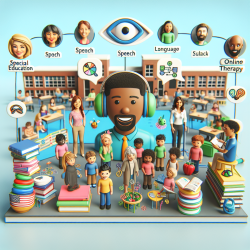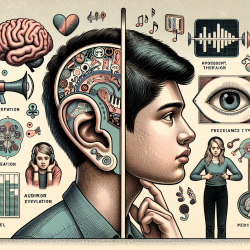Introduction
In the realm of children's mental health, identifying individuals at high risk for suicide and self-harm is paramount. The research article "Risk of Suicide and Self-harm in Kids: The Development of an Algorithm to Identify High-Risk Individuals Within the Children’s Mental Health System" provides a comprehensive approach to this challenge. This blog aims to guide practitioners in enhancing their skills by implementing the outcomes of this research or encouraging further exploration into this critical area.
The RiSsK Algorithm: A Data-Driven Approach
The RiSsK algorithm, developed using Ontario data from the interRAI Child and Youth Mental Health Screener (ChYMH-S), offers a robust decision-support tool for identifying children and youth at risk for suicide or self-harm. The algorithm's validation across 59 agencies demonstrates its predictive strength for suicidal ideation and self-harm.
The algorithm categorizes risk into seven levels, allowing practitioners to systematically evaluate a child's risk based on a combination of criteria and risk factors. This structured approach ensures that high-risk individuals are identified early, enabling timely intervention and support.
Practical Application for Practitioners
Practitioners can utilize the RiSsK algorithm to enhance their decision-making processes. By integrating this tool into their practice, they can:
- Identify high-risk individuals early, allowing for prompt intervention.
- Use the algorithm's structured approach to guide clinical assessments and resource allocation.
- Collaborate with families and other professionals to develop comprehensive care plans tailored to the child's needs.
It is crucial for practitioners to use the RiSsK algorithm in conjunction with their clinical judgment. The algorithm provides a data-driven foundation, but the unique circumstances of each child must be considered holistically.
Encouraging Further Research
While the RiSsK algorithm offers a valuable tool, continuous research is essential to refine and expand its application. Practitioners are encouraged to engage in further research to explore:
- The algorithm's effectiveness across diverse populations and settings.
- Potential integration with other assessment tools and methodologies.
- Longitudinal studies to track outcomes and refine predictive capabilities.
Conclusion
The RiSsK algorithm represents a significant advancement in identifying children at risk for suicide and self-harm. By integrating this tool into practice, practitioners can enhance their ability to provide timely and effective interventions. For those interested in delving deeper into the research, the original paper offers a comprehensive exploration of the algorithm's development and validation.
To read the original research paper, please follow this link: Risk of Suicide and Self-harm in Kids: The Development of an Algorithm to Identify High-Risk Individuals Within the Children’s Mental Health System.










